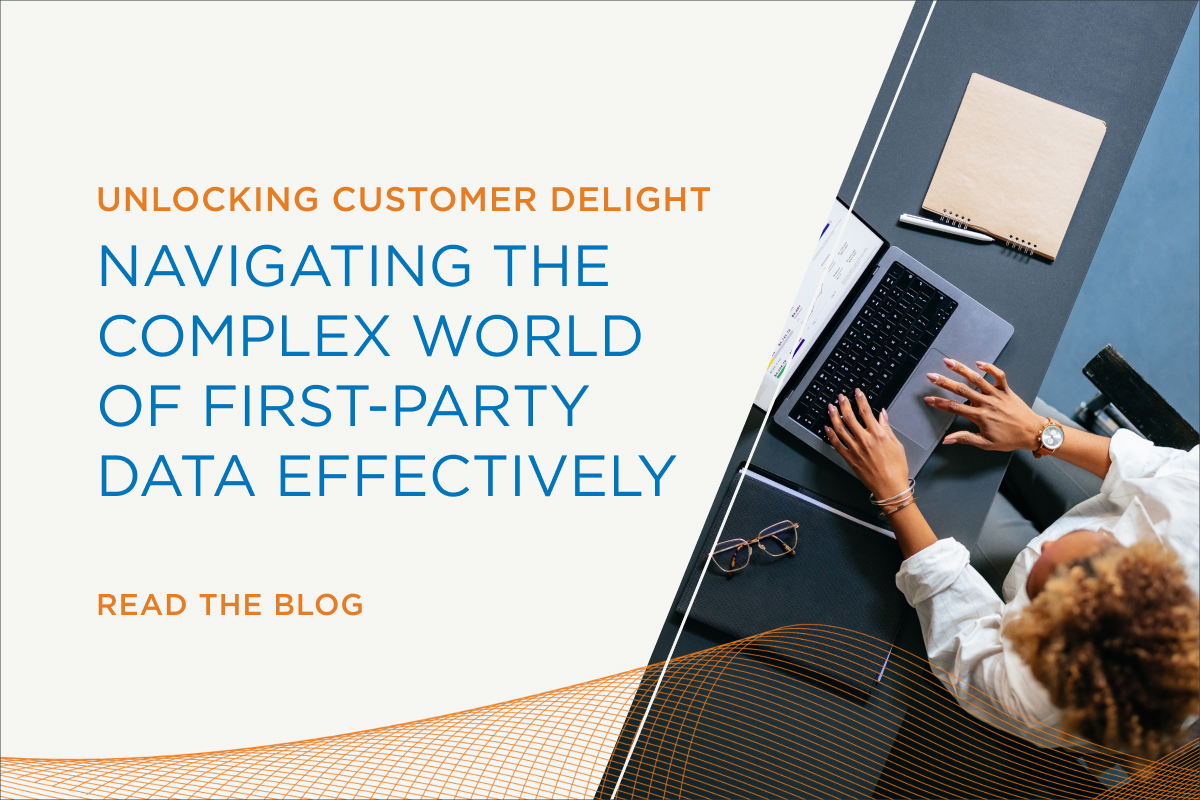- First-party data – data that companies collect directly from consumers – matters more now than ever.
- When brands leverage first-party data, they must be acutely aware of consumer privacy concerns and regulations if they are to avoid misuse.
- Consumers are becoming more comfortable sharing their data in exchange for value and relevant personalized offers.
- Brands should take steps to maintain the health and quality of customer data in order to improve their customers’ overall experience.
With the death of third-party cookies and the proliferation of notice- and consent-based privacy laws, many marketers have had to double down on how they use their first-party data. In this context, I am referring to first-party data as that which companies collect directly from consumers. Information about things like purchase intent, browsing behavior and loyalty-based programs. (This is as opposed to what we consider “zero-party data,” which a customer intentionally, proactively shares with your brand.)
Every company (and every good marketer) wants to deliver a superior experience to its customers. When used properly, first-party data can be the driver of that experience. As brands strive to be more customer-centric, data is central in helping them gain a deeper understanding of each consumer’s wants and needs. The way a company organizes and applies its first-party data can be a key differentiator in personalizing marketing and improving the overall shopping experience.
Harder than it looks
It might seem simple on the surface: when leveraging customer data, find a way to delight people by ensuring that everything you do anticipates or fulfills a need that they have. The reality is, executing this kind of seamless, frictionless, personalized approach is harder than it looks. This goes for how we market as well as how we deliver our products and services to customers.
First-party data comes with restrictions on how brands can use it, including some situations that require explicit permission from consumers. While some people see the benefit and are willing to share their data, others remain cautious. In a February 2023 Vericast survey about privacy, 46% of consumers said they believed their privacy was at risk based on marketers selling the data they collect. Along those same lines, 23% said they were unsure what kinds of information companies collect overall.1
It’s important to remember that every instance of data collection, and especially data sharing, comes with its own set of rules regarding use. Even if your company doesn’t share data with third parties and just keeps it within your organization, there are ways you could potentially misuse that data. Here are three examples.
Legal misuse
Perhaps the most obvious misuse of data is from a legal standpoint, which is to say running afoul of the many laws and regulations that come into play when a brand collects data from a customer. For instance, let’s say you’re a bank that collects and utilizes credit and income data for a single initial purpose like informing underwriting decisions. Now let’s say you decide to use that same data to create a marketing campaign, but you did not provide notice of that use to your customers when you collected their data. This is an example of data misuse because the information you collected for one explicit use is now being used for something completely different, for which you did not provide notice.
Another common legal misuse happens when companies sell customer data without having spelled it out in their privacy policy. This could result in legal exposure.
Relevancy misuse
If I repeatedly purchase dog food and dog supplies from a retailer and get back marketing messages that feature cats, we have a relevancy problem. Nothing in the data I provided to you suggested I own cats but here we are. The personalization of your messaging misses the mark and I start to slip away as your customer. Personalize around me being a dog owner and you start to build loyalty and strengthen purchase intent. (This is a hypothetical example but I really do have the most wonderful dog. He’s a social media star and his name is Keelo.)

When a brand fails to personalize effectively, it doesn’t necessarily break trust but it does squander a golden opportunity to build it. The dog/cat disconnect in our example gives a customer reason to pause and reflect on whether the brand they are buying really knows anything about them. What should be a moment of connection between consumer and brand instead becomes a moment of alienation.
The introduction of data to the brand-customer relationship has in some ways redefined what we mean when we talk about “customer service.” Consumers today have higher expectations not only in terms of the traditional definition of customer service but in the broader ways they experience and interact with a brand. Why? Data. They know we know about them and they expect us to tailor the experience for them. The time is now for brands to elevate their own standards for what they deliver in order to keep up with their customers.
Experience misuse
I believe customers are getting a little more comfortable with their data being out there in the world. But here’s the thing: they also have growing expectations that you are going to use their data to inform and improve the experience they have with you. Is your brand using customer data to offer people a better experience? If not, ask whether you deserve their business.
Another part of that experience is whether a customer has the ability to change and delete their data at their will. Consumer control should be absolutely central in any conversation about data and the “right to be forgotten” via user-based permissions should always be available to them. A February 2023 Vericast survey about privacy revealed that 39% of consumers felt powerless in controlling or informing how companies use their personal data.1
The takeaway from all this? Today’s consumers are not saying they’re unwilling to share their data – it’s more like “I want to control who I share my data with and I don’t want to share it with just anybody.” It’s largely about the terms under which they agree to share. Do it right, do it transparently, do it while demonstrating clear benefits to your customers and they will reward you in the end.
1Vericast, Consumer Privacy Survey, February 2023, n=1,000
